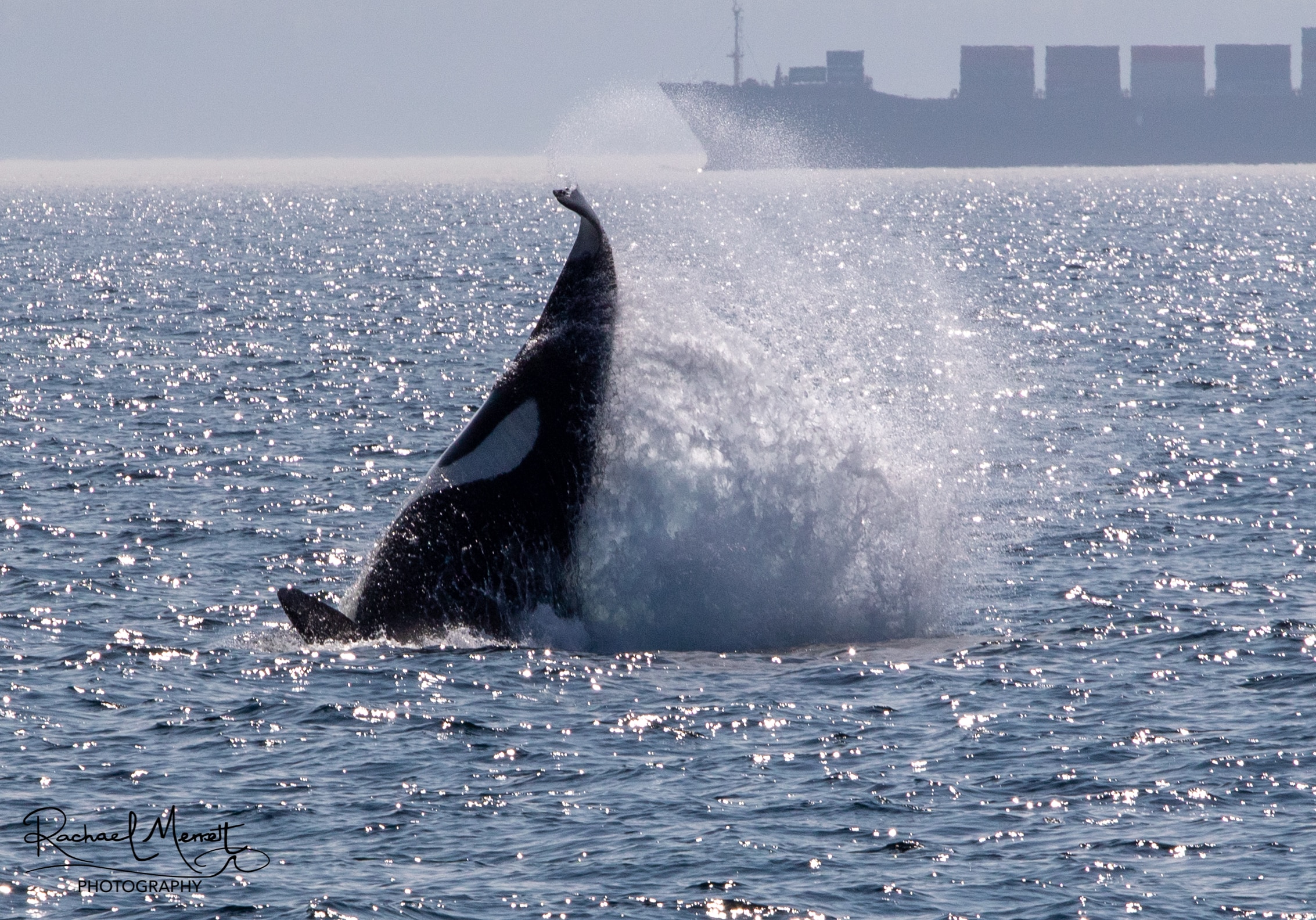In the Pacific Northwest, the Southern Resident Killer Whale population has been facing a crisis that threatens their survival. The crisis is an ever-dwindling supply of Chinook Salmon, their preferred prey, within their range along the western coast of Canada and the United States. Chinook Salmon make up approximately 80% of the Southern Resident Killer Whale diet, with Chum being next on the list. Steelhead is likely an important food source during the winter months, but sea-going populations of this species are in danger of extinction themselves.
Why don’t the Southern Residents just eat seals like the Bigg’s (Transient) orcas do?
Well, the answer to that has to do with the culture and physical capabilities of the Southern Residents. To understand why they can’t just switch to another prey source, we need to understand a bit more about the evolution of killer whale populations.
Scientists believe that killer whales have been around for at least six million years. Killer whales in different areas of the world began to develop specialized diets, likely based on the availability of abundant prey in a given area. This segregation led to the evolution of different ecotypes of orcas. Over millions of years, different populations developed their own dialects, culture, food preferences, and hunting strategies. To put this divergence into perspective, the Southern Resident Killer Whale population is genetically one of the most distant relatives of the West Coast Bigg’s (Transient) Killer Whale population, despite the overlap of their ranges.
Killer Whale Culture
Culture is central to killer whale society. They are matriarchal, with mothers and grandmothers passing on vital life skills, language, and information from one generation to the next. It becomes ingrained in every family member what is food and what isn’t, where to find food at different times of the year, and how to hunt it. As with humans, culture is a difficult thing to change or adapt for orca societies. When thousands of generations of your family have hunted and eaten salmon, it is difficult to just ‘flick the switch’ and start eating marine mammals or other species of fish.
Physical Capability
The struggle to change the Southern Resident Killer Whale diet is further complicated by a lack of physical capability to hunt marine mammals like seals, sea lions, porpoises, and other whales. Southern Residents have smaller, less robust, and dense teeth compared to their mammal-hunting cousins, the Bigg’s Killer Whales. They also evolved to have lighter jawbones suited for biting fish rather than chomping on the bones of marine mammals. As you are probably starting to see, switching food sources isn’t so easy!
The Future Of The Southern Resident’s Diet
There is new evidence that the Southern Residents may be trying other fish on the menu that they previously have not been recorded eating. In the past few years, scientists have found the Southern Residents are dining on species such as Coho Salmon, Halibut, and Sablefish. The populations of these species may not be high enough to replace their Chinook diets, but it does show that they are trying to adapt. Coho Salmon are much smaller and more agile than Chinook, so the Southern Residents are spending more energy trying to catch them than they would when they hunt Chinook. However, being very smart animals, they have the potential to become more efficient at capturing Coho.
Halibut and Sablefish are deepwater species and orcas are not famous for their diving abilities compared to other types of whales. Chinook salmon tend to be found in relatively shallow water, so Southern Residents haven’t needed to be champion divers to catch their prey. They may need to rely on the larger, heavier males to hunt for deeper dwelling species, while females can focus on salmon when they are present as they are closer to the surface. Every species of fish behaves differently, so the Southern Residents have to learn different techniques to catch them. They do have the second-largest brain of any animal, but it still takes time to learn new skills and be successful using them!
The future of Southern Resident Killer Whales is uncertain, but there is hope that they can and will adapt to eating other species in addition to Chinook salmon. Only time will tell, but we will be there watching and cheering them on!









